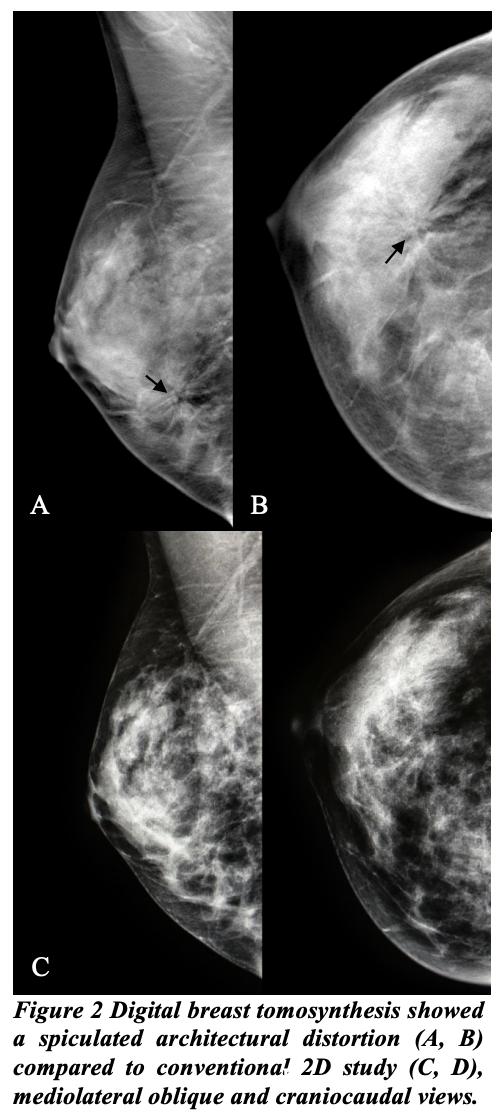
Augustė Rakštytė1, Džiugas Jagminas2, Margarita Šalašidi3, Dalia Bartuškaitė3
1 Vilnius University, Faculty of medicine, Vilnius, Lithuania;
2 Lithuanian University of Health Sciences Kaunas Clinics, Kaunas, Lithuania; Lithuanian University of Health Sciences, Faculty of medicine, Kaunas, Lithuania.
3 Lithuanian University of Health Sciences Kaunas Clinics, Kaunas, Lithuania;
Abstract
Our goal is to reveal digital breast tomosynthesis (DBT) benefits in real clinical practice by analyzing a case of ductal carcinoma in situ in Hospital of Lithuanian University of Health Sciences (LSMU) Kaunas clinics.
There are distinct benefits of tomosynthesis over mammography with radiologists having fewer false positives and more accurate detections. There is a significant and meaningful disadvantage with tomosynthesis in that it takes longer to evaluate each patient.
DBT is a new, promising, mammographic technique, which has the potential to improve the two inherent limitations of conventional mammography: the low sensitivity in women with dense breast parenchyma caused by overlying breast parenchyma, and the low specificity caused by summation of normal breast parenchyma.
Higher specificity in staging BI-RADS final assessment is another advantage of DBT, keeping that in mind, fewer examinations are assessed as BI-RADS 3 (probably benign finding), which results in fewer additional follow-up diagnostic studies. As our clinical case analysis showed, DBT is specific, sensitive, time and cost efficient option to choose in case of inconclusive results of breast ultrasonography and conventional 2D mammography.
Keywords: breast cancer, breast imaging, mammography, screening, tomosynthesis.